Vineyards
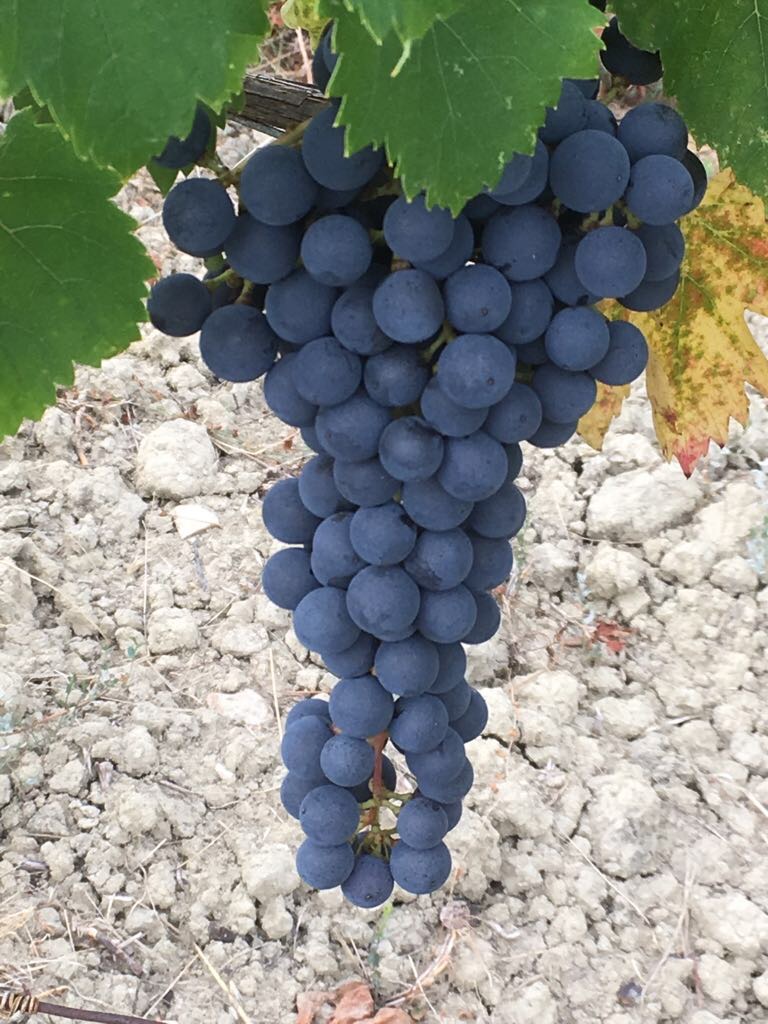
Martilde’s land is distributed on both sides of the provincial road that goes up to Rovescala.
Our finest plot is “Zuccarello”, on a small hill in the sun and breeze all day long; from there we derive our best wines.
Exposure to sunlight is: north east, east, north west, west.
All classified as DOC, vineyards vary in age: some more recent and others extremely old, close to 90 years. We have always tried to keep the ancient ones, as they truly are nature’s beautiful monuments.
The younger vineyards (up to 15 years old) have a density of about 5000 plants for hectare.
Supports are wood poles, more expensive and difficult to maintain, but supple and pleasant to look at.
Pruning is guyot, one shoot and max. 10 buds.
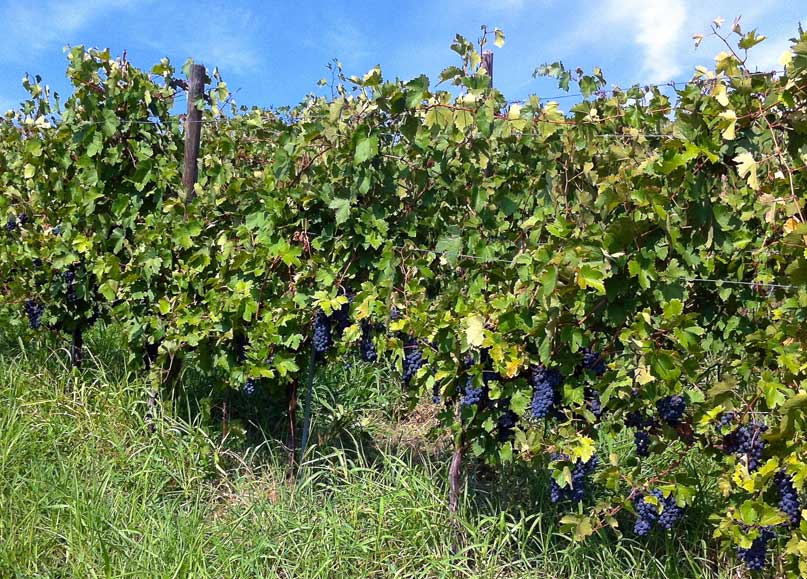
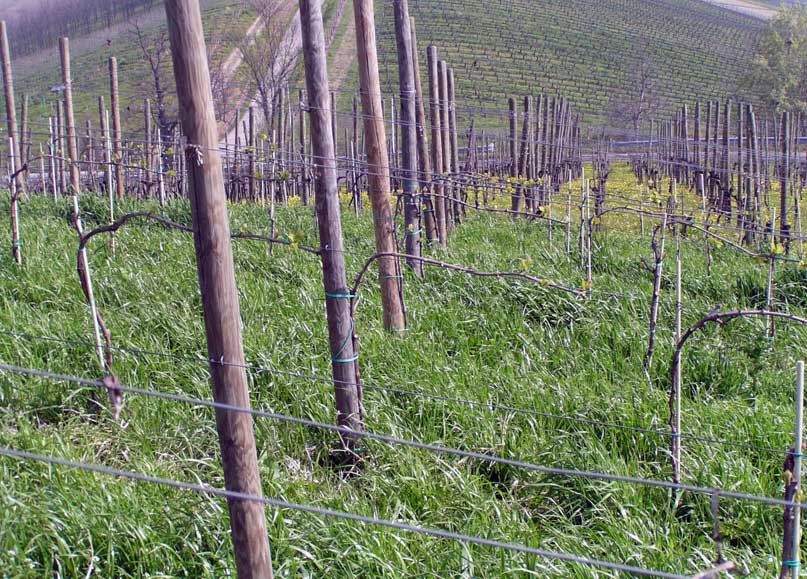
The soil has calcareous-claily composition, slightly changing in different areas. It is good for structured reds and aromatic whites.
In order to obtain a firm, balanced ground, apt to favour (along with pruning) a right level of production in the vineyards, we opted for permanent grassing since 1993.
This was the year in which the first EU regulations for a better level of quality and care of the environment were introduced.
Periodically, we cut the grass and leave it on site.
Fertilizing is limited, according to the requirements of the different plots, with organic products. We want to replace only what is lost during the season.
Vines diseases treatments are also done according to the organic regulation.
Wine grapes varieties
As typical of the area, in our vineyards there is a predominance of red grapes.
A special kind of love and care is given to croatina, the grape from which bonarda, pride of Rovescala, is made. But we are rather pleased with barbera as well, which gives a smooth full wine, with moderate acidity and an inclination for aging.
Pinot noir has always been our soft spot, and to the initial small vineyard of old vines and unknown clones, we have gradually added some parcels of french clones, selected for high quality red pinot noir.
It is a whimsical wine, requiring much care in the vineyard and in the cellar, but that is exactly why it is so intriguing.
Unfortunately, weather changements in the last vintages have made it difficult for us; often it is too hot, and without the right temperature range between day and night.
So, we can’t produce pinot noir each year, but only when we get an appropriate season.
We make only 2 white wines, both of them from the same aromatic malvasia di Candia grapes, but very different from one another.
One more conventional, with whole grapes pressed immediately, while the other has a long maceration on the skins.
We don’t buy grapes from others, but process – personally – uniquely those produced at Martilde.
We know and are accountable for the entire life cycle of our products, from vineyards to bottle.
Seasons and works
A vineyard is a constant source of chores and duties. There is always something to do, apart when it is snowing or during the last phase of summer, when the only thing left is checking and waiting for the right moment to begin vintage.
It is indeed shortly after vintage that we tackle the first item of the long list of works: pruning.
As a rule, it should not take place until the middle of november, when vines have shed their leaves and are settling for winter.
These plants are peculiar creatures and, seeing them during the cold season, naked and twisted, it is almost impossible to visualize all the lusciousness of green leaves and shoots you will witness later in spring.
Pruning is a very fulfilling experience, as each vine is a unique being, which requires different choices, according to your aim.
After pruning there is maintenance work, replacing poles, trellises, anchors and so on.
On the onset of the colder weather, you can fertilize with some organic compost young or particularly thin and needy vines.
There is the cleaning of water draining channels and the ploughing of soil in new plots (this is important up to their third year of age, to allow development of an adequate root system). When it snows, you finally rest.
Or move to the cellar, where you are bound to find something to do.
Before Easter (the spring moon, really), when the pruned vines begin “to weep” (with small droplets of sap leaking from the cut ends) it is essential to have them well tied to their line.
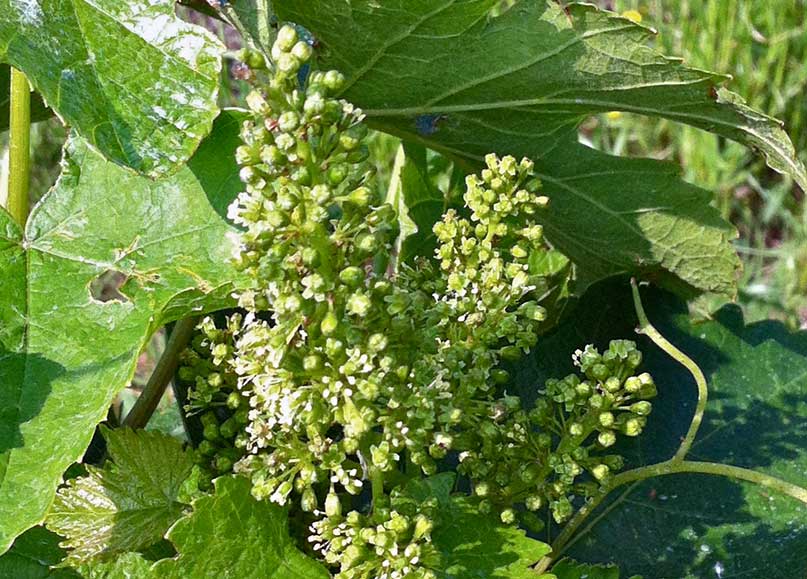
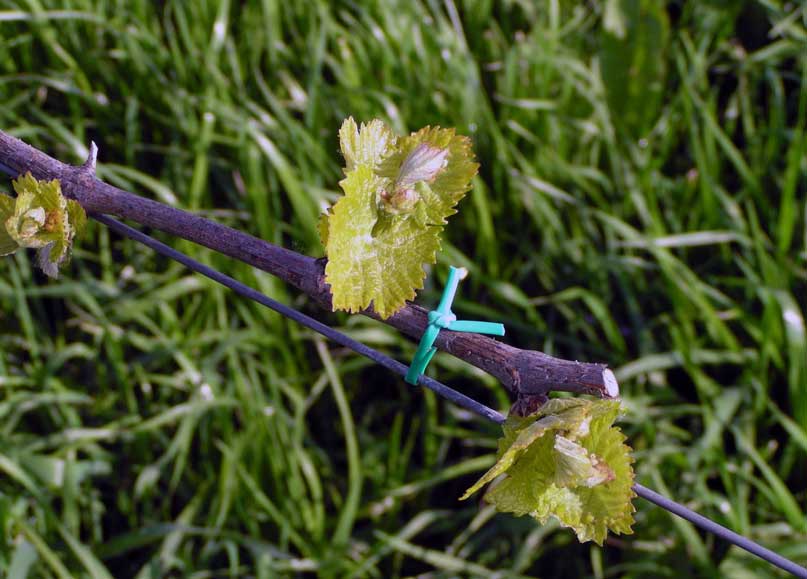
Their small fragile buds are easy to damage, fixing the main shoot. Young vines must be secured to their stake in different places, so they can grow up straight and tidy.
In spring there may be fertilizing (if it has not taken place in winter), and the mowing of grass begins; an operation that will take place over and over again during the next months, especially in a rainy year.
The grass should be kept short, in order not to reach the main line where the vine is tied, subtract excessive resources, or create a humid microclimate during summer. This latest condition is bad for vines as it fosters fungal illnesses.
Very soon, green shoots begin to grow, and they have to be tied up, several times, as they grew longer, with new leaves and tendrils.
When shoots are about 10 cm long, a temperature of 10° Celsius has been reached, and also 10 mm of rain have fallen, an old rule says it is time to begin treatments for grapes illnesses (mildew and peronospora). These will follow the climatic trend of the season and the different stages of grapes development.
We stick to the rules of organic farming, and all our vineyards are certified by bioagricert.
Vines will have in the meanwhile passed from the first fuzzy leaves to blossoms and a first trace of clusters. The berries, at the beginning of summer, get to be like “pepper grains” and afterwards real fruits, which will colour while the season advances.
When the end of July is reached you have about 15 days (generally) before starting to think about harvest of the early varieties. So, you can keep in shape getting all the cellar equipment clean and ready.
Vintage
Vintage is a demanding merrymaking. For a winery like us, it is the peak of our work, the goal of all the year’s activities.
When the time comes, we can think of little else.
Walking in the vineyards, picking up berries here and there, trying to judge their taste, sweetness, acidity, the presence of a green under-tone. We check the grapes for small bruises, burns from the sun, consistency, skin thickness, eventual weaknesses.
Rain can do good to vines “stopped” by a water stress, or make the berries swell exceedingly, creating small cracks that may induce rot.
We also pick up different samples to analyze them (sugar, acidity, ph), and decide the right moment to begin (weather allowing).
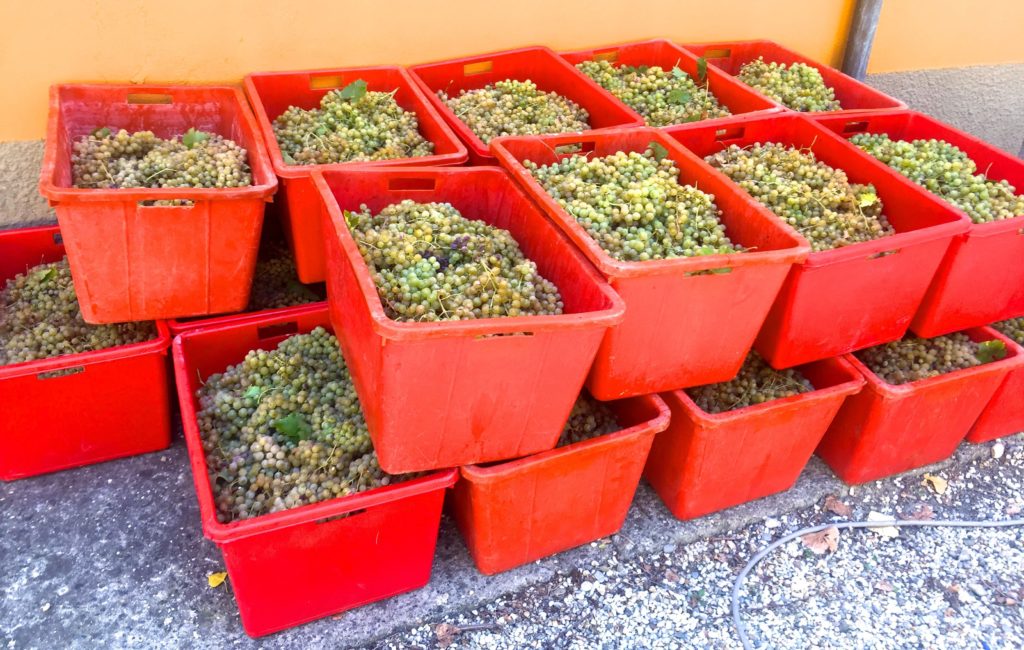
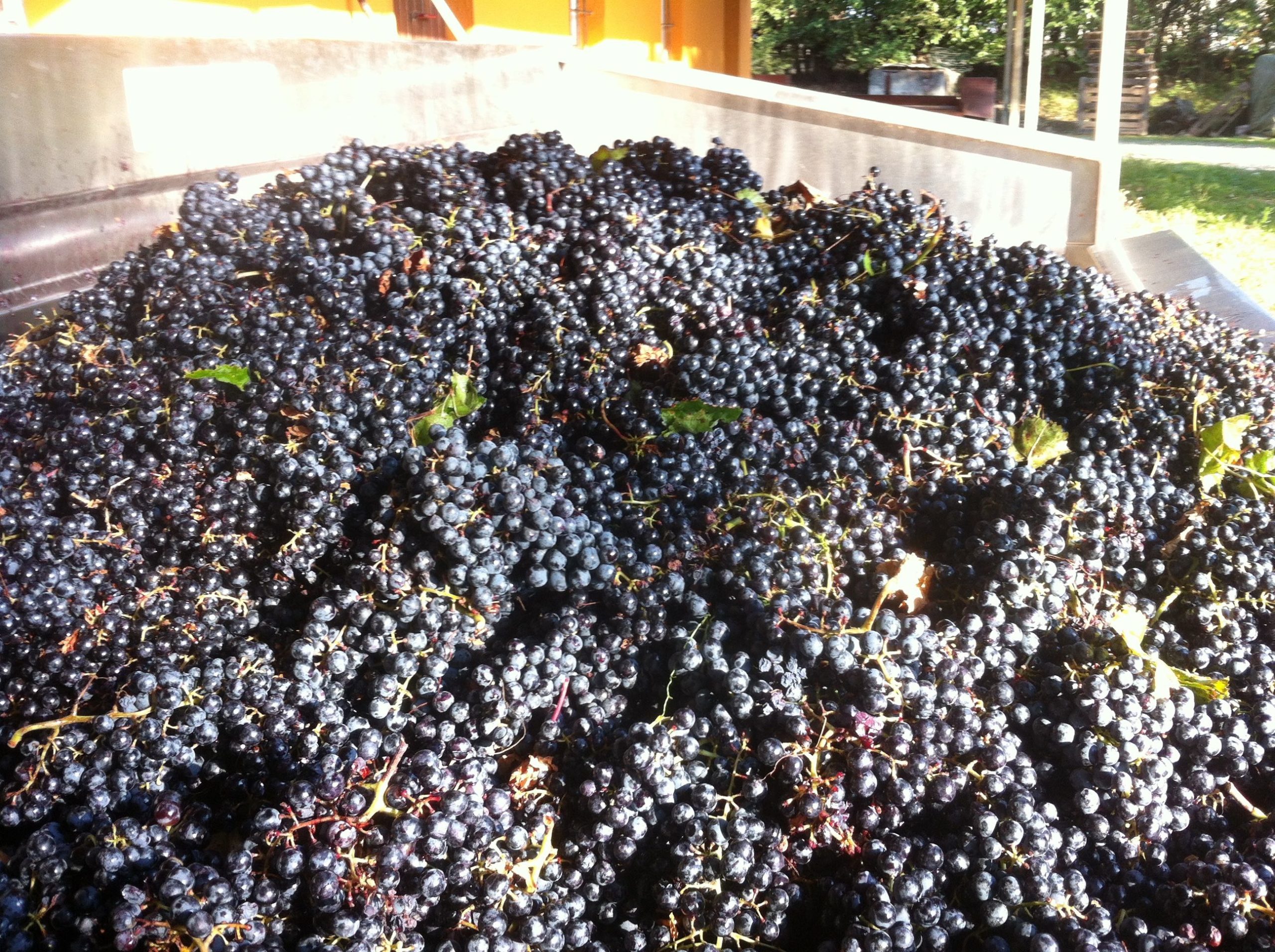
A high sugar content is not the only thing to look for, you may loose freshness and the bouquet of the wine. Besides, with last years different climatic conditions, storms are a real menace.
Therefore there is quite a commotion, the wish to end it all before the weather turns, the smugness for having been wise (or lucky) enough to wait the right time, the pride for the quality of one’s harvest, the impatience and exasperation for the foreseeable unforeseen events that punctually happen.
Everything else fades on the background, any other subject becomes less important. We are tired, excited and very moody.
Always approach a wine maker cautiously during vintage.
When how and with whom
When all sensorial and analytics checks have been done, careful examination of weather forecasts completed, evaluations with our oenologist finally over, heated family discussions brought to an end, and the crystal ball is returned to its cupboard, we decide it’s time and vintage can begin.
The picking order (with short or long pauses in between) starts with pinot noir, goes on with malvasia, barbera, and last bonarda.
All grapes are handpicked. White grapes are put in cases, in order to keep them whole until crushing, so must will not start fermenting before time.
Red grapes are gathered in a cart and brought immediately home, to be pressed and destemmed.
We use only our own grapes and, having the vineyards all close to the cellar, time from the moment they are harvested and the one they are processed is very short.
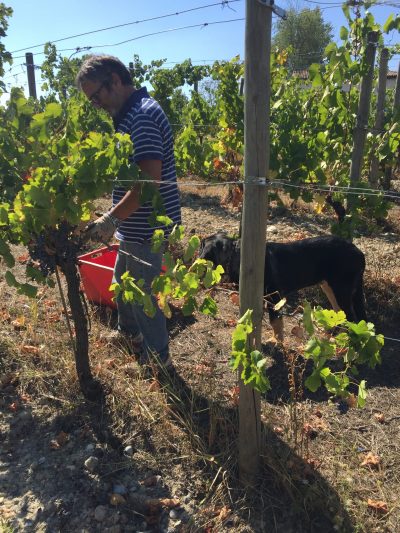
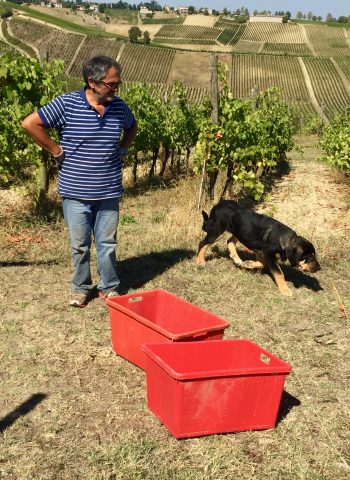
Do you recall tales of old vintages, with relatives and friends taking part, making quite a happy turmoil, and thinking mainly about the evening eating and drinking that will follow the day’s work? Well, none of this is now possible.
Today, even for a small winery like us, all people working must be regularly employed, apart from next of kin.
Keep also in mind that, together with the gleeful side, vintage is a lot of effort. It is often hot, going downhill means going up afterwards, one gets dirty with sticky must, it is necessary to be careful not to cut oneself with the scissors or being stung by bugs, and baskets weight a lot.
But in a fine sunny day, harvesting beautiful grapes, you work, chat and joke, and it is a festive occasion.
